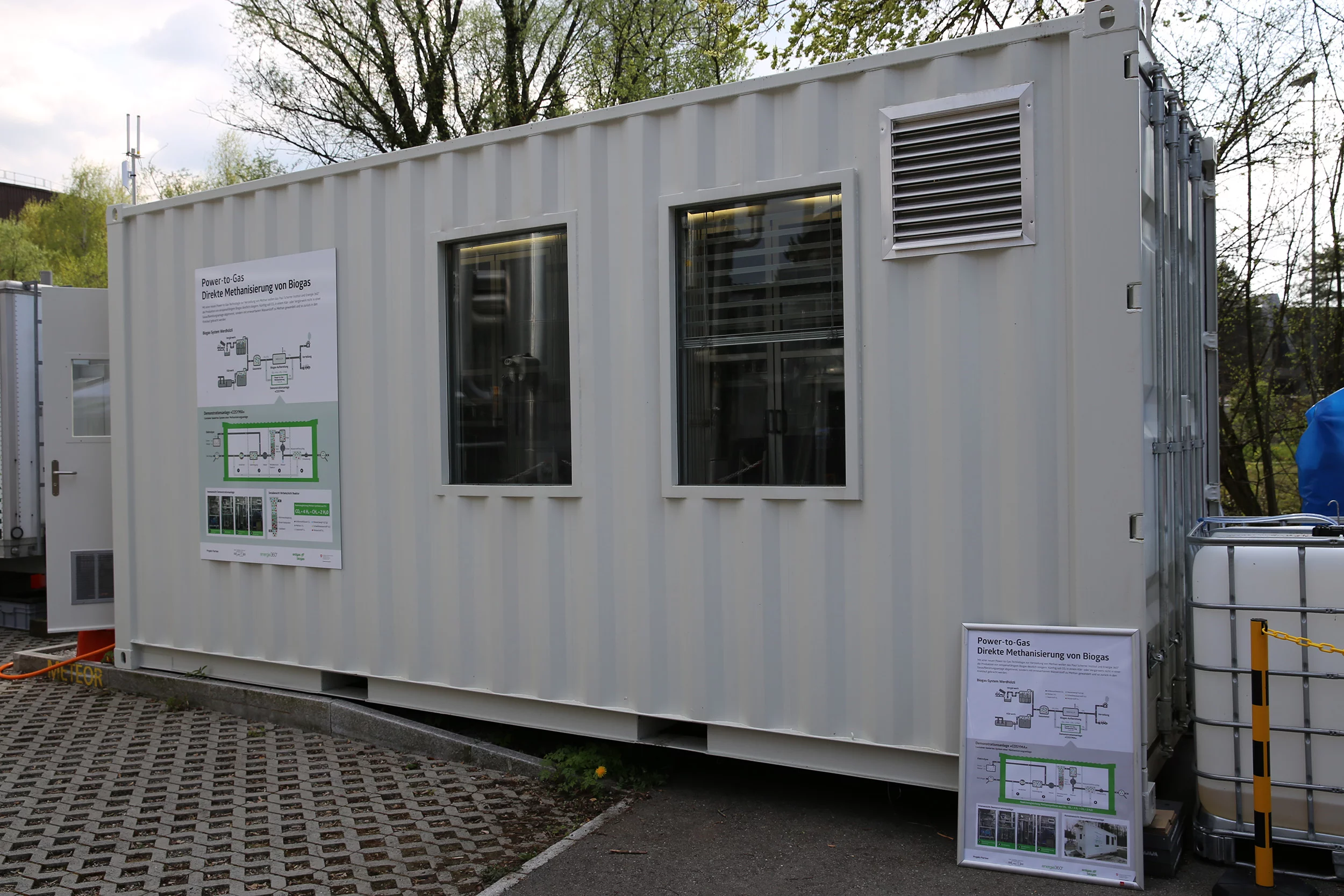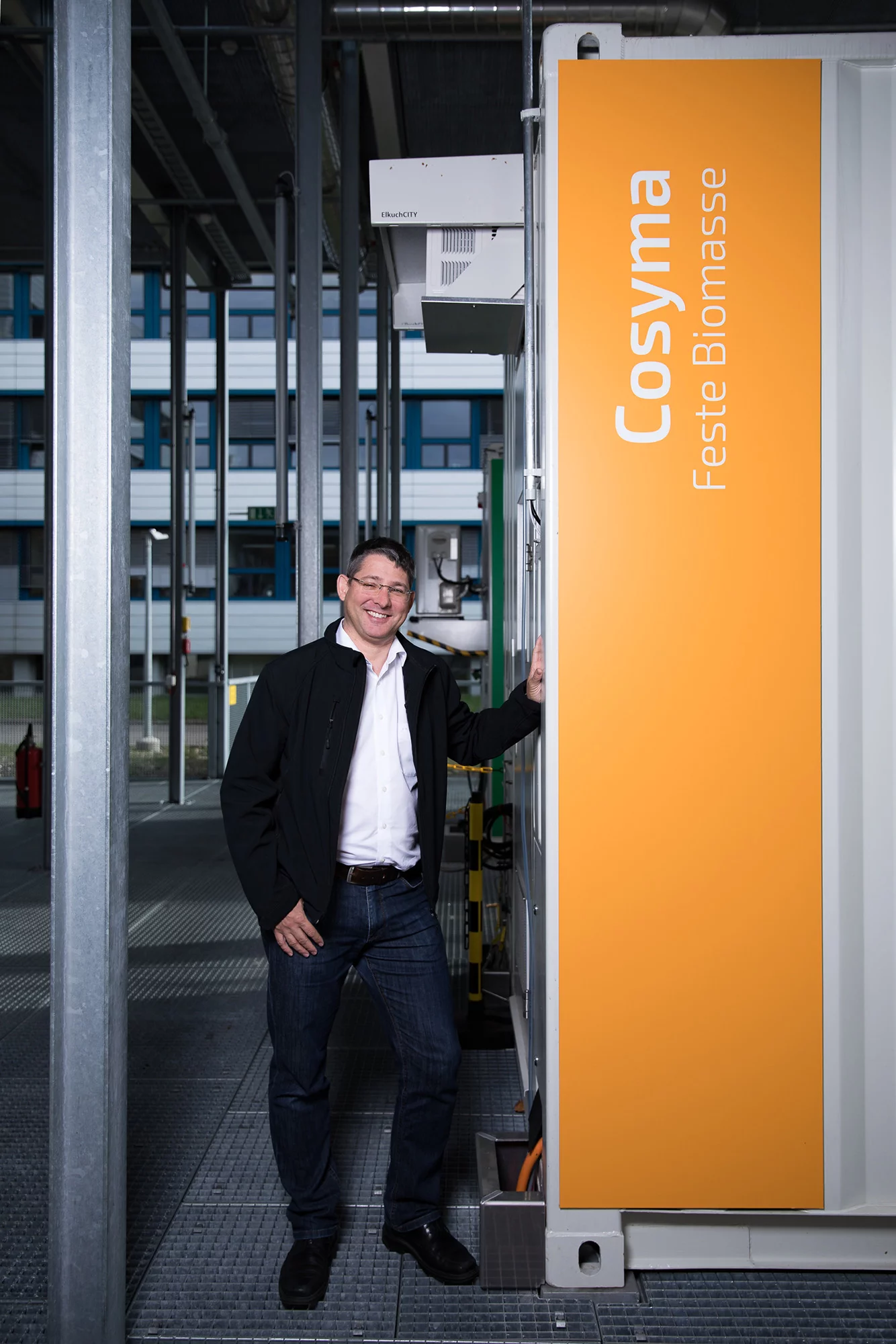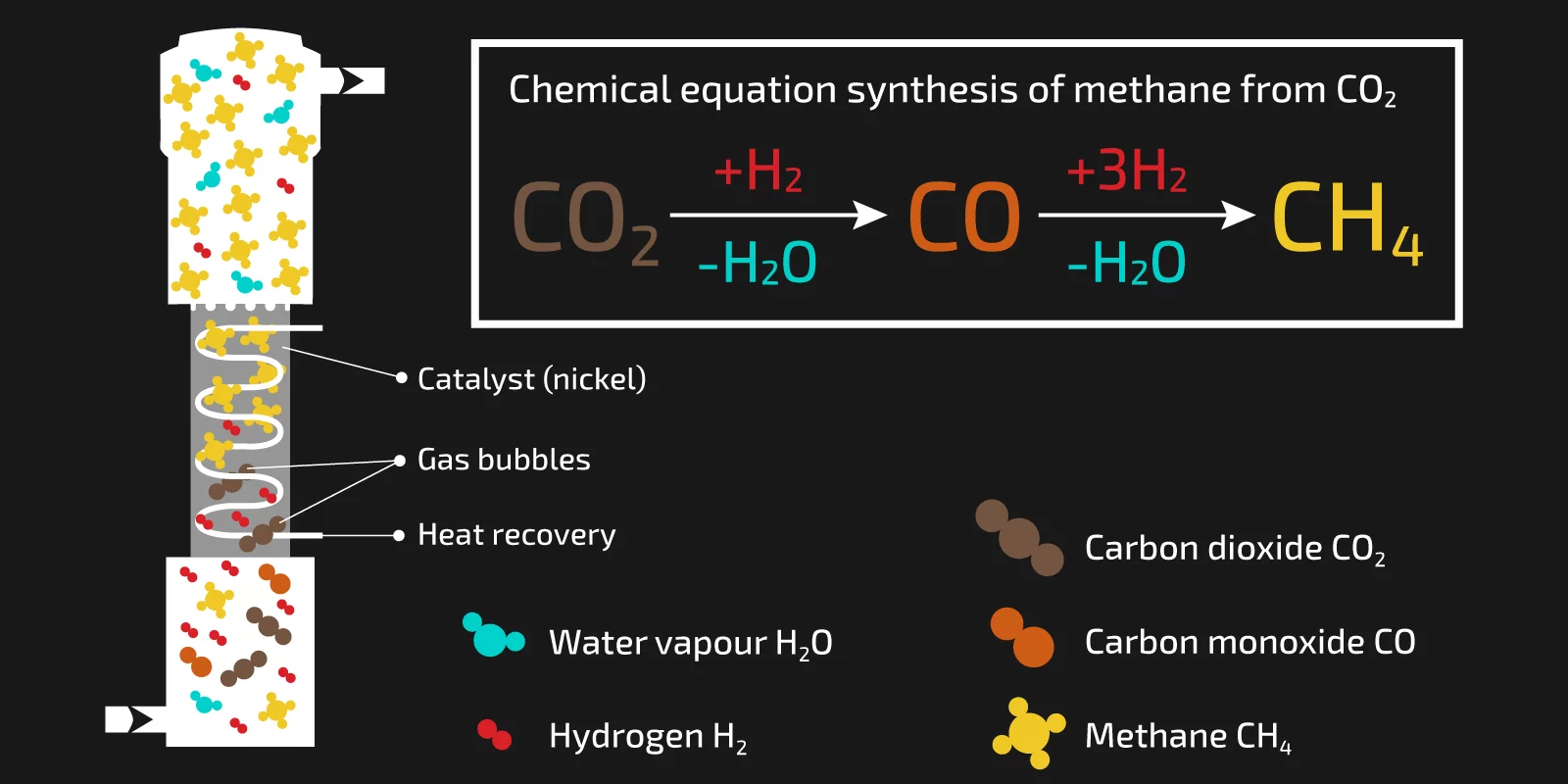With a technology developed at the Paul Scherrer Institute PSI, around 60 percent more biogas can be produced from bio-waste than with conventional methods. But can it stand the test in practice as well? A 1,000-hour test at the Werdhölzli biowaste digestion and wastewater treatment plant in Zurich was able to answer this question with a clear yes. It was carried out in cooperation with the Zurich-based energy provider Energie 360°. The analysis of the stress test is now available.
Kitchen garbage, garden waste, and sewage sludge: Already today, in the Werdhölzli biowaste digestion and wastewater treatment plant in the city of Zurich alone, around 25,000 tons of bio-waste and 500,000 tons of sewage sludge are processed into biogas. Bio-waste and sewage sludge are fermented, and from the resulting raw biogas methane, the main constituent of natural gas, is produced. This is then fed into the natural gas network of Zurich. Yet the method used up to now has a disadvantage: The raw biogas contains only around 60 percent methane. Carbon dioxide (CO2) makes up around 40 percent and must be removed through a costly process to make the biomethane that is produced usable.
An alternative to the processing methods used to date is offered by direct methanation. The idea behind it is convincingly simple: Instead of removing the CO2, add hydrogen. This is coaxed into a reaction with the CO2 from which, in turn, methane is produced. This not only increases the total methane yield from the raw biogas, but the methane is also of such high quality that it can be fed into the natural gas network without further processing. Furthermore, the raw biogas can be almost completely exploited.
60 percent more methane
This idea also proves feasible in practice, as a 1,000-hour test with technology developed at the Paul Scherrer Institute PSI was able to show. The practical testing was conducted at the Werdhölzli biowaste digestion and wastewater treatment plant in Zurich and forms the core of a project that PSI has carried out in cooperation with the Zurich-based energy provider Energie 360°, with support from the Swiss Federal Office of Energy and the research fund of the Swiss gas industry. The heart of the technology used is a type of reactor known as a fluidised bed. In it, the raw biogas and the added hydrogen bubble through and mix with particles of nickel catalyst. The catalyst ensures that the CO2, with the hydrogen, will be converted into methane.
The results, which are now available, confirm that the PSI-developed technology leads to a considerably higher methane yield: We were able to produce around 60 percent more methane, in comparison to conventional processing methods
, says PSI project leader Serge Biollaz.
The gas-mixture challenge
Among the critical challenges of the 1,000-hour test was the composition of the raw biogas, because this varies depending on the underlying biomass. In addition, raw biogas can contain compounds that impair the catalyst and therefore have to be removed before methanation – such as sulphur compounds, for example. One of our most important findings is that the plant handled these different mixtures of raw biogas according to our predictions and ran stably over the entire duration of the test
, Biollaz stresses.
The question of economic viability
Alongside the technical feasibility of the technology, its economic viability was put to the test. In the end, that is what determines if a process will be implemented on an industrial scale. To evaluate this, the project team assumed the present-day framework conditions – that is, the current costs for the electric power the process requires and for the necessary plant components. The result of their calculations: The costs for direct methanation are roughly the same as in conventional biogas upgrading plants. One important cost driver is the capital expenditure for the electrolyser that produces the hydrogen needed for the process. Another basic cost driver is the ancillary electricity costs. To ensure that direct methanation plants will be economically attractive, ways must be found to reduce these costs. In addition, according to currently applicable regulatory framework conditions, high grid use fees would also accumulate. To achieve competitive prices for biomethane, the project team concluded, power must be generated directly on-site and the electrolyser must be placed in immediate proximity to the direct methanation plant.
From the user's perspective, the results of the 1,000-hour test are promising: Particularly for medium-sized biogas plants, we see potential here
, says Peter Dietiker, division manager for renewable energy at Energie 360°. These would include plants producing between 5 and 15 gigawatt-hours of biogas per year. Around 40 plants of this scale are currently in service in Switzerland.
The next steps
In the meantime, the mobile test facility named Cosyma (Container-based System for Methanation) has returned to PSI. As a next step, the researchers want to investigate whether their process will also work with manure, which accumulates in large quantities in agricultural livestock management. At present the test facility is being adapted to meet the anticipated requirements. These concern in particular the gas purification carried out prior to the actual methanation. The raw biogas produced through fermentation of liquid manure is made up of different components than those arising from fermentation of household bio-waste and sewage sludge from wastewater treatment.
The ESI Platform at PSI
Cosyma is part of PSI's Energy System Integration Platform. The ESI Platform commenced operation in the fall of 2016. Its goal is to investigate and refine different variants of power-to-gas technology with an emphasis on their technical and economic feasibility, in close cooperation with partners from research and industry. The experimental report "Direct Methanation of Biogas" is available on the website of the Swiss Federal Office of Energy.
Text: Paul Scherrer Institute/Martina Gröschl
Further information
- Direct Methanation of Biogas – Final report
- Higher methane yield from bio-waste
- Overview: ESI Platform – new pathways to the energy system of the future
Contact
Dr. Serge Biollaz, Thermal Process Engineering Group Leader, Paul Scherrer Institute, 5232 Villigen PSI, SwitzerlandTelephone: +41 56 310 29 23, e-mail: serge.biollaz@psi.ch [German, English, French]



